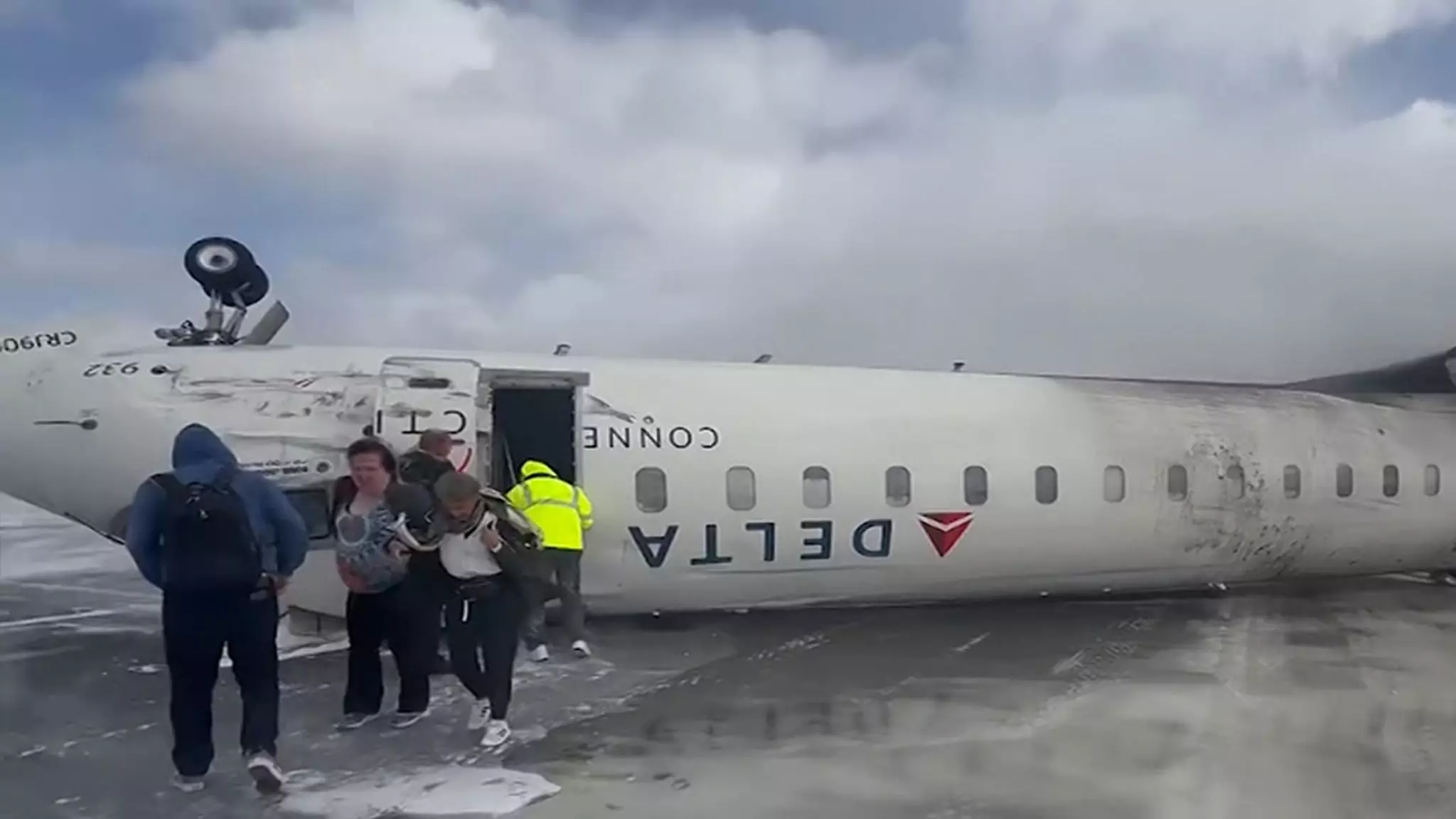A recent incident involving a Delta Air Lines flight has captured significant attention due to its dramatic nature. On a snowy Monday, a plane arriving from Minneapolis was involved in a shocking accident upon landing at Toronto Pearson International Airport. Video footage reveals the aircraft, an Endeavor Flight 4819, came to a halt flipped upside down on the runway, sparking concerns about passenger safety and operational protocols during challenging weather conditions.
The incident unfolded shortly after a severe winter storm deposited over eight inches of snow on the runway. Surface conditions at airports during winter storms can severely impact landings, posing risks associated with reduced friction and visibility. In this case, the airport authority was in the process of addressing icy conditions, as they often do following heavy snowfall. A significant question arises: to what extent did these treacherous weather conditions contribute to the precarious landing and subsequent crash of the aircraft? Such environmental factors should always be rigorously evaluated when examining the series of events leading up to an aviation incident.
Emergency services responded quickly to the scene, highlighting the importance of readiness in the face of aviation emergencies. Witnesses reported seeing smoke billowing from the aircraft, with parts of the fuselage appearing burned and the wings and tail seemingly damaged or detached. Fortunately, Toronto Pearson Airport confirmed that all passengers and crew members were accounted for, underscoring the effective emergency measures implemented in the aftermath. The flight had a total of 80 individuals on board—76 passengers and four crew members—indicating a higher-than-average number of individuals affected by this incident.
Video footage captured by bystanders shared across social media shows shocked passengers safely exiting through the overturned cabin door. This immediate sense of relief, albeit mixed with fear, was palpable as onlookers documented the chaotic scene. It brings to light the human aspect of aviation incidents—while the statistics matter, individual stories and experiences underscore the gravity of such occurrences.
Initial reports indicated that several passengers had sustained injuries and were subsequently hospitalized, a reminder of the potential dangers involved in air travel. Delta Airlines responded to the situation by reassuring the public of their commitment to investigate the incident thoroughly. Their statement emphasized the company’s focus on maintaining safety, which must be a priority in their operations.
The response from Delta, although focused on their logistical efforts, also highlights a broader implication regarding the nature of air travel today. With an increasing number of flights globally, incidents like this serve as crucial wake-up calls for airlines to reinforce protocols and ensure rigorous training for crews, especially during adverse weather conditions.
Ultimately, the Delta Air Lines incident at Toronto Pearson not only draws attention to the specific events that transpired but also reflects upon the aviation industry’s ongoing challenges. The scrutiny that follows such incidents emphasizes the responsibility shared by airlines, regulatory bodies, and airports to constantly improve safety measures and protocols, ensuring that flying remains one of the safest modes of travel despite the occasional turbulence.

